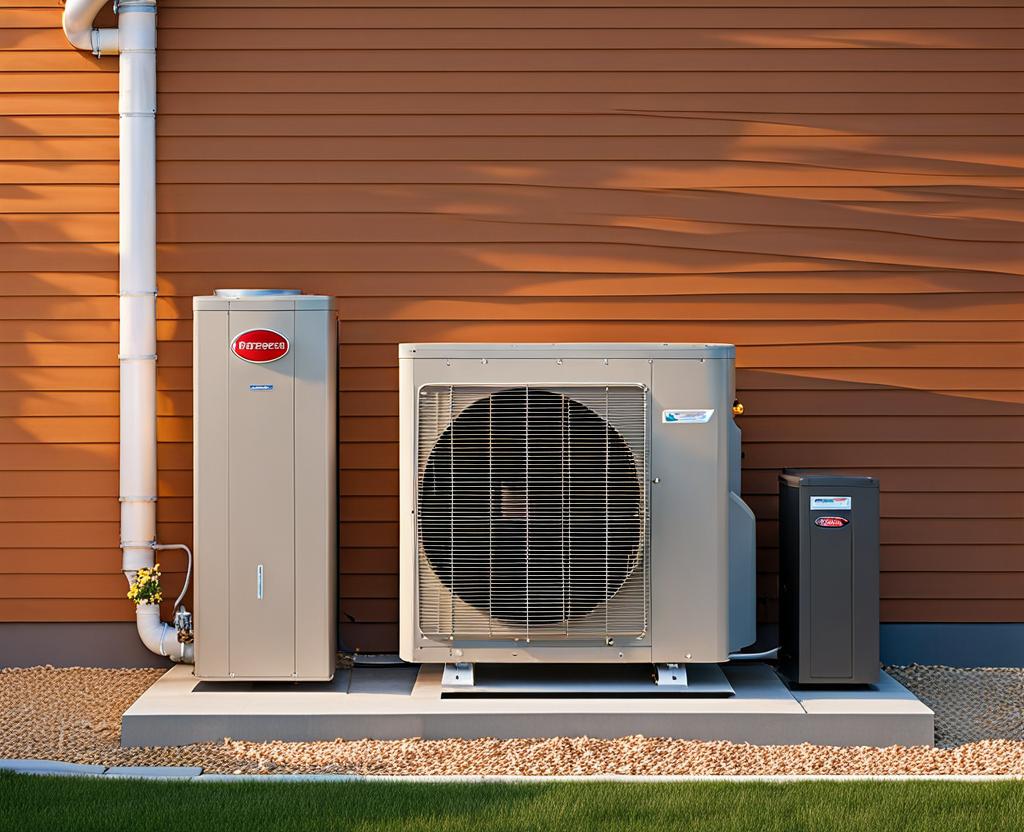As a homeowner, few situations are as stressful as when your heating system fails during the depths of winter. That’s where the heat pump’s emergency heat mode comes into play, ensuring your living space remains cozy even in the most frigid conditions. While this auxiliary heat source is a lifesaver, understanding how to optimize its usage is crucial for maintaining energy efficiency and reducing utility costs.
Heat Pump Emergency Heat Mode: An Overview
Let’s kick things off by demystifying the heat pump emergency heat mode. This setting activates a secondary heat source, typically an electric resistance heater or a gas furnace, when the outdoor temperature drops below a certain threshold. At these low temperatures, the heat pump’s ability to extract heat from the outside air becomes less efficient, necessitating the auxiliary heat source to supplement the system’s heating capacity.
While the emergency heat mode ensures your home stays warm, it’s important to note that it can significantly increase energy consumption and operating costs. That’s why striking a balance between comfort and efficiency is essential. By gaining a deeper understanding of how this mode works and when it’s activated, you can make informed decisions about optimizing its usage and minimizing your energy bills.
Understanding Heat Pump System Components
To fully grasp the role of emergency heat, we need to explore the inner workings of a heat pump system. At its core, a heat pump operates by transferring heat from one location to another, using refrigerant and a compressor to facilitate this process. During the winter months, the heat pump extracts heat from the outdoor air and transfers it indoors, providing warmth to your living space.
However, as outdoor temperatures drop, the heat pump’s efficiency decreases, and it becomes more challenging to extract sufficient heat from the colder air. That’s where the auxiliary heat source comes into play. This additional heating component, whether it’s an electric resistance heater or a gas furnace, kicks in to supplement the heat pump’s output, ensuring your home remains comfortable even in extreme cold.

Types of Auxiliary Heat Sources
The type of auxiliary heat source used in your heat pump system can vary. Some common options include:
- Electric resistance heaters: These heating elements work by converting electrical energy directly into heat. While effective, they can be quite energy-intensive, resulting in higher operating costs.
- Gas furnaces: These auxiliary heat sources burn natural gas or propane to produce heat. While typically more efficient than electric resistance heaters, they do require proper ventilation and maintenance.
- Heat pump with dual fuel capability: Some systems integrate both an electric heat pump and a gas furnace, automatically switching between the two sources based on outdoor conditions and energy costs.
Proper system sizing and installation are crucial to ensure your heat pump and auxiliary heat source work seamlessly together, providing optimal performance and energy efficiency.
Optimizing Emergency Heat Usage
While the emergency heat mode is designed to keep you comfortable, relying on it excessively can lead to skyrocketing energy bills. Here are some strategies to help you optimize its usage and strike a balance between comfort and cost-effectiveness:
First and foremost, regular maintenance is key. By scheduling annual tune-ups with a professional HVAC technician, you can ensure your heat pump system is operating at peak efficiency, minimizing the need for emergency heat. During these maintenance visits, technicians will clean and inspect various components, including the outdoor unit, indoor air handler, and auxiliary heat source.
Additionally, monitoring your system’s performance and troubleshooting any issues promptly can help prevent excessive reliance on emergency heat. Pay attention to signs such as uneven heating, unusual noises, or a sudden spike in energy bills, as these could indicate a problem that needs addressing.
When it comes to your thermostat settings, aim for a balance between comfort and efficiency. While it might be tempting to crank up the heat during cold snaps, consider setting the thermostat to a more moderate temperature and layering up with warm clothing and blankets. This approach can help minimize the need for emergency heat while still keeping you reasonably comfortable.
Finally, consider upgrading to a more efficient heat pump system if yours is nearing the end of its lifespan. Newer models often incorporate advanced technologies that improve energy efficiency and reduce the reliance on auxiliary heat sources, ultimately saving you money on your utility bills.
Maintaining your heat pump system is crucial for ensuring optimal performance and minimizing the need for emergency heat. Here are some key maintenance tips to keep in mind:
- Schedule regular professional maintenance checks: An annual tune-up by a certified HVAC technician can help identify and address any potential issues before they escalate.
- Clean or replace air filters regularly: Dirty air filters restrict airflow, reducing the system’s efficiency and potentially leading to increased reliance on emergency heat.
- Ensure proper airflow and clearance around units: Obstructions or debris around the outdoor unit can impede airflow and heat transfer, reducing the system’s overall performance.
- Consider upgrading to a more efficient system: If your heat pump is nearing the end of its lifespan, upgrading to a newer, more energy-efficient model can significantly reduce operating costs and minimize the need for emergency heat.
By prioritizing regular maintenance and addressing any issues promptly, you can optimize your heat pump’s performance, reduce your energy consumption, and minimize the reliance on emergency heat, ultimately saving you money while keeping your home comfortable all season long.

This is where you’ll find inspiration to create a stylish and beautiful dream home.